
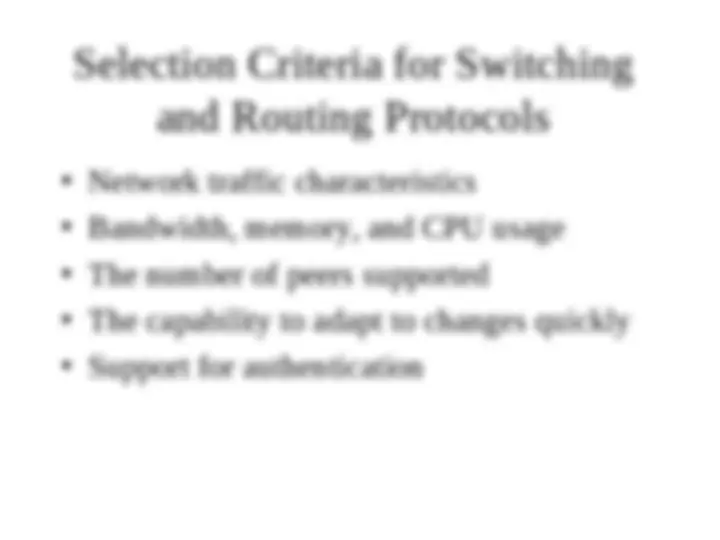
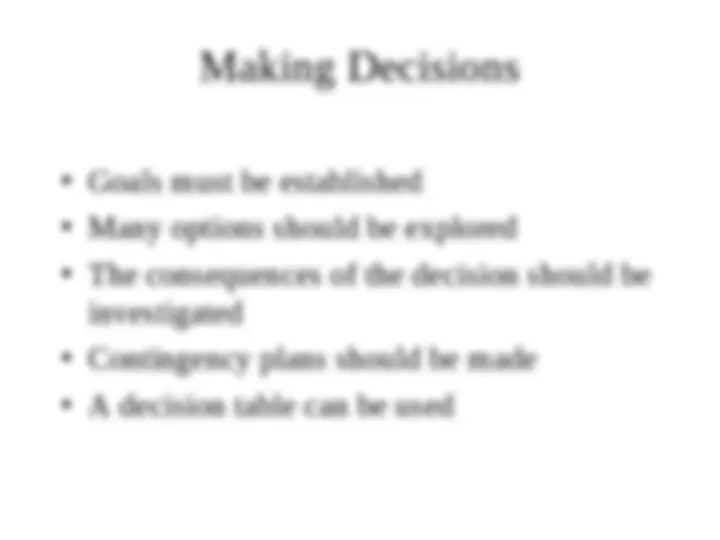
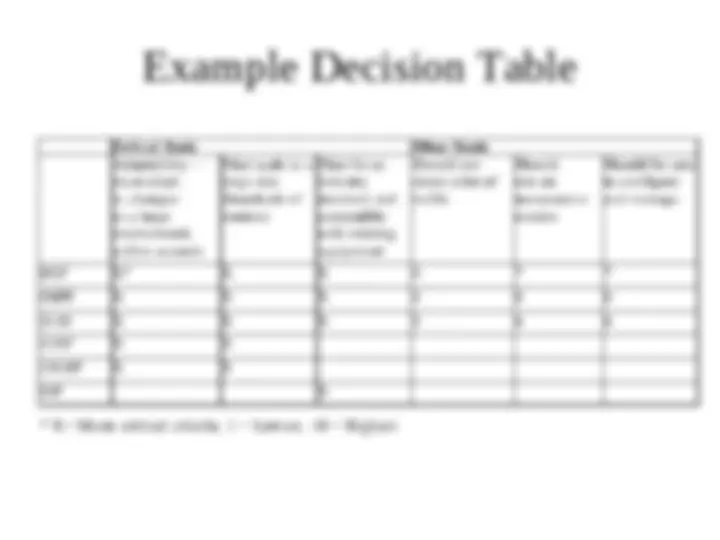
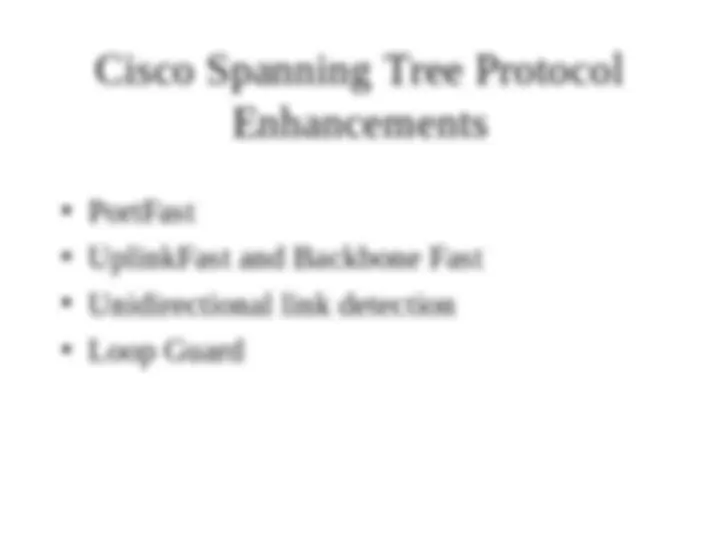
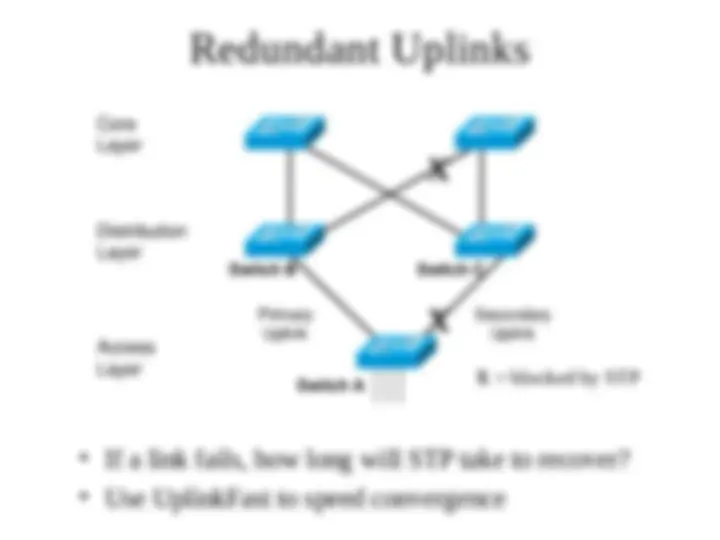
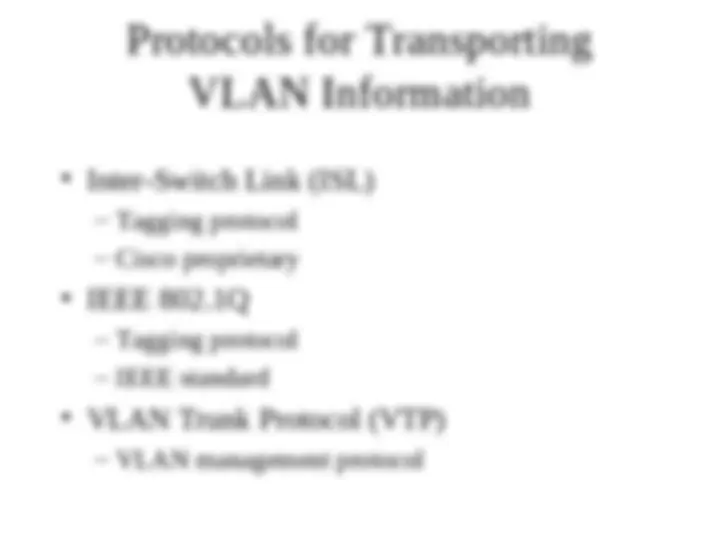
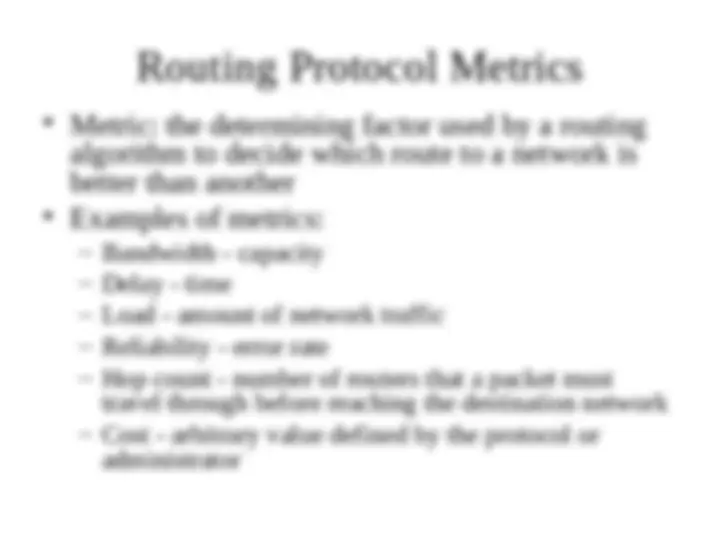
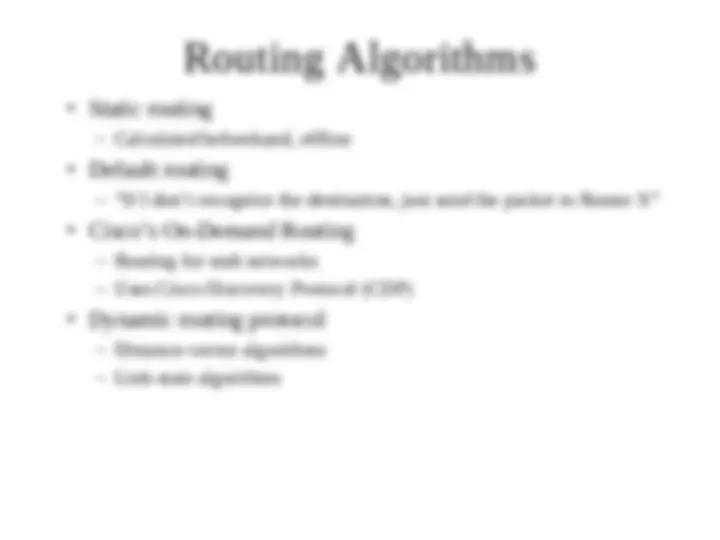
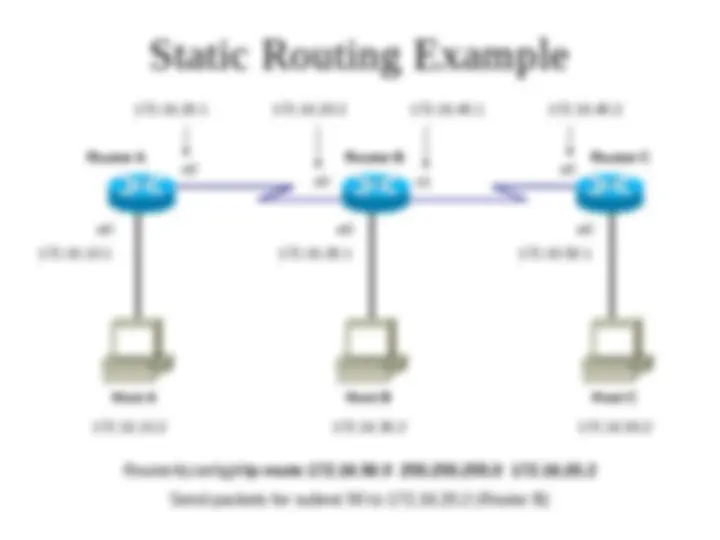

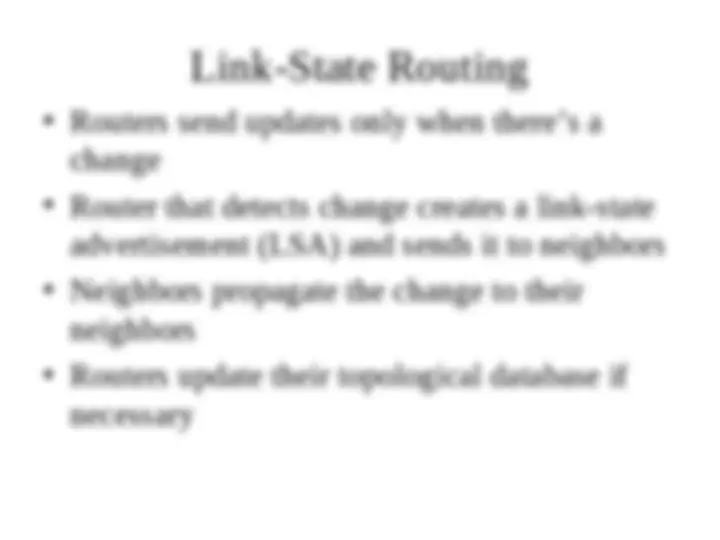
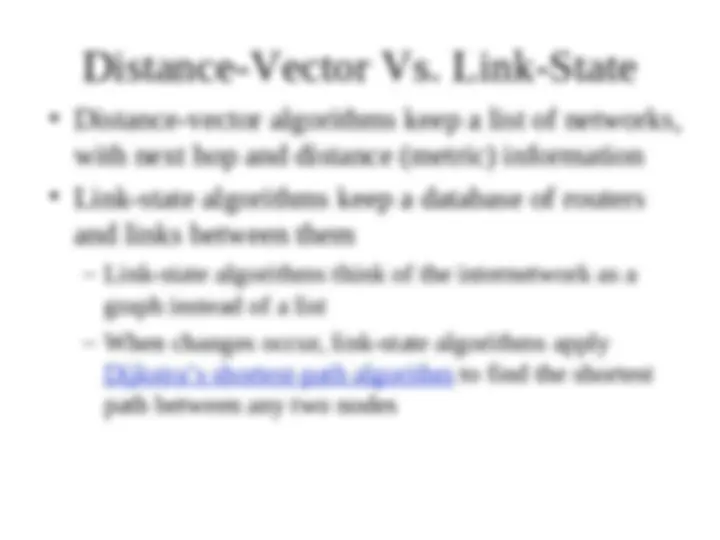
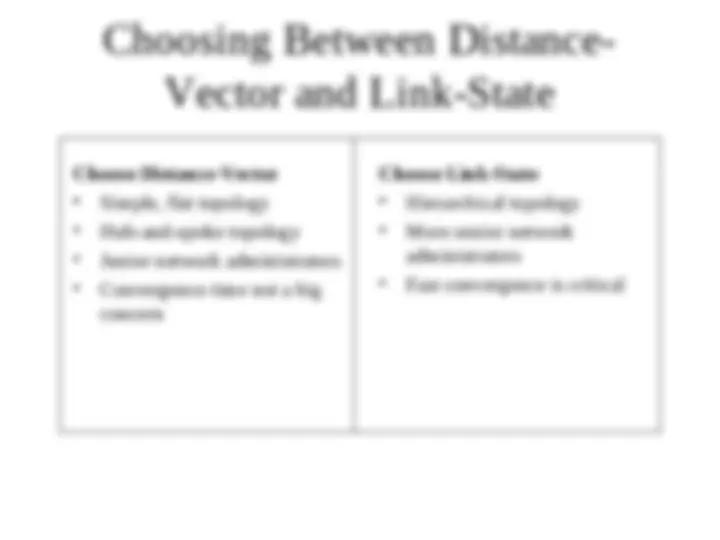
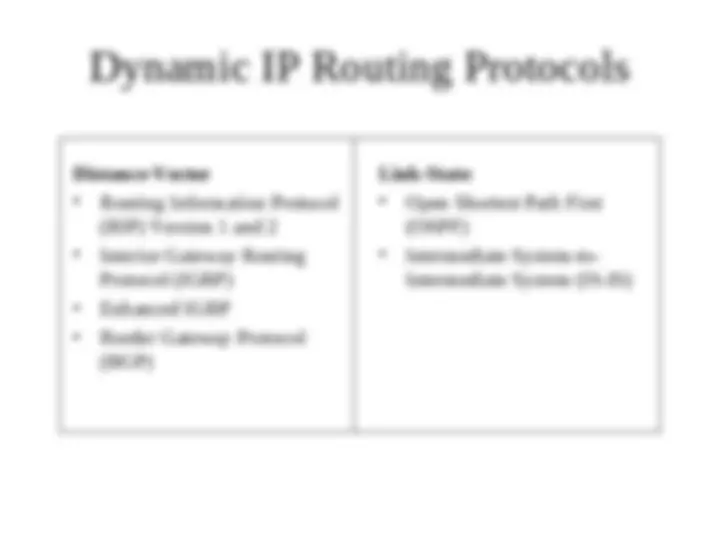
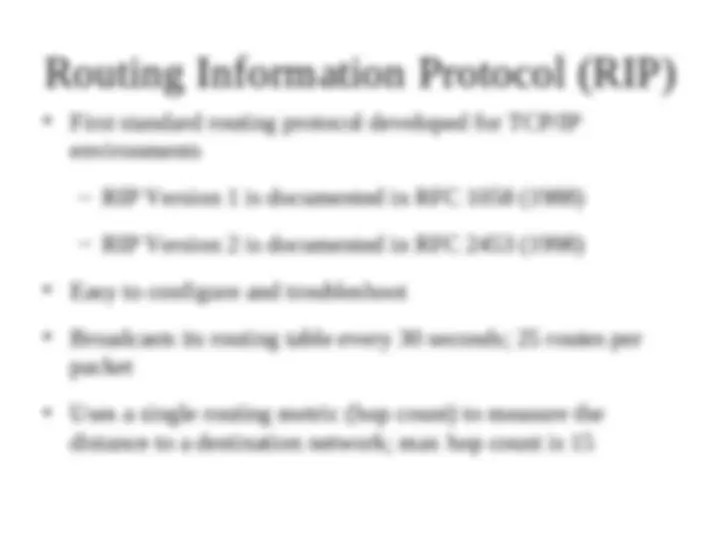


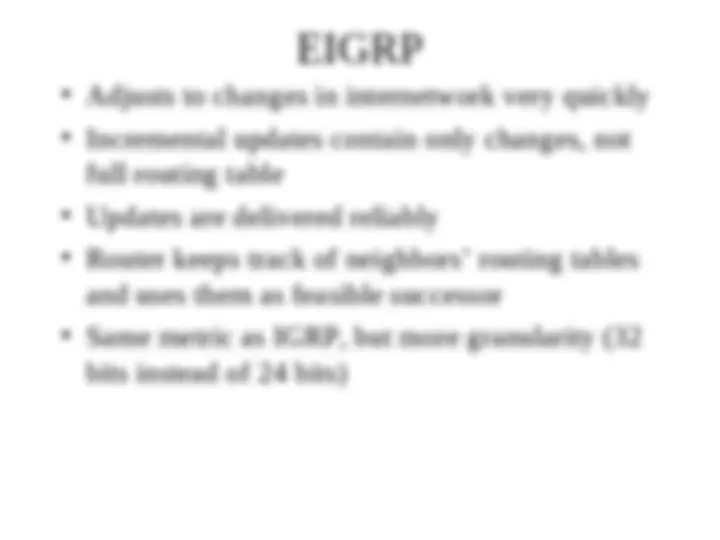
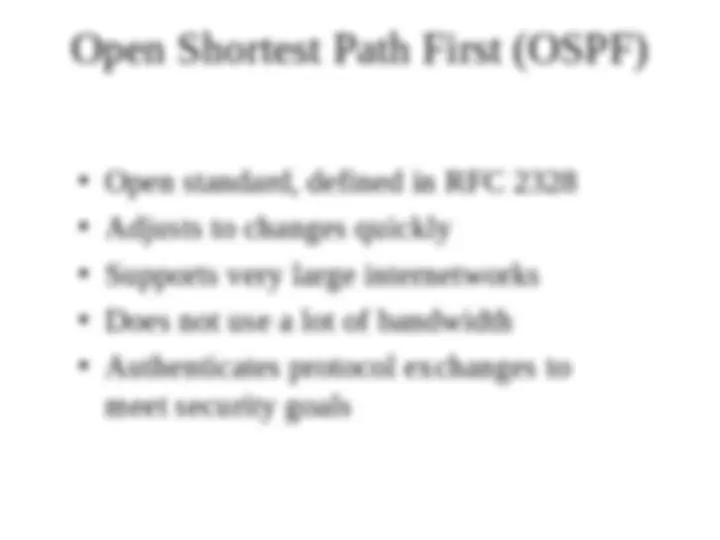
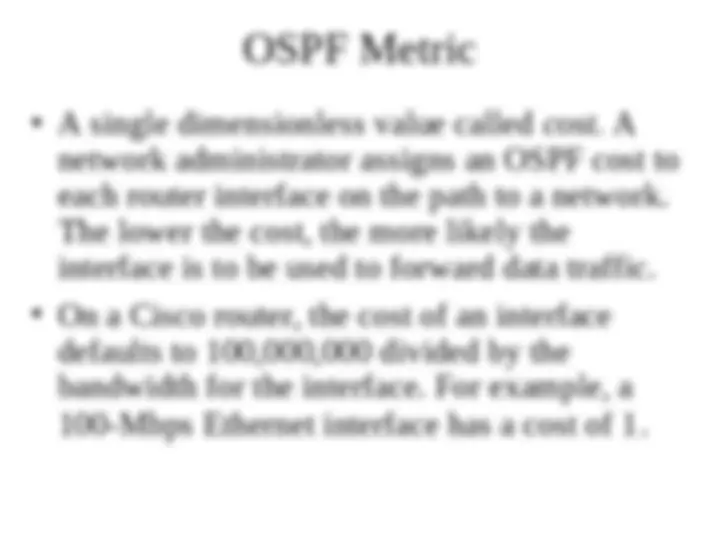
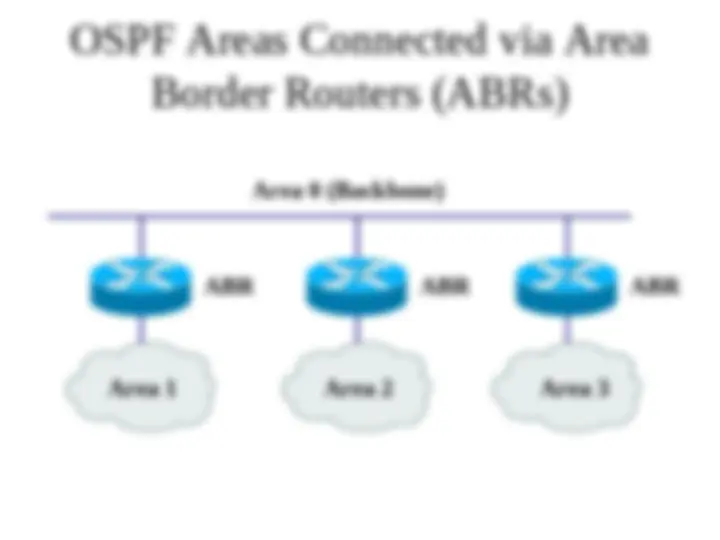
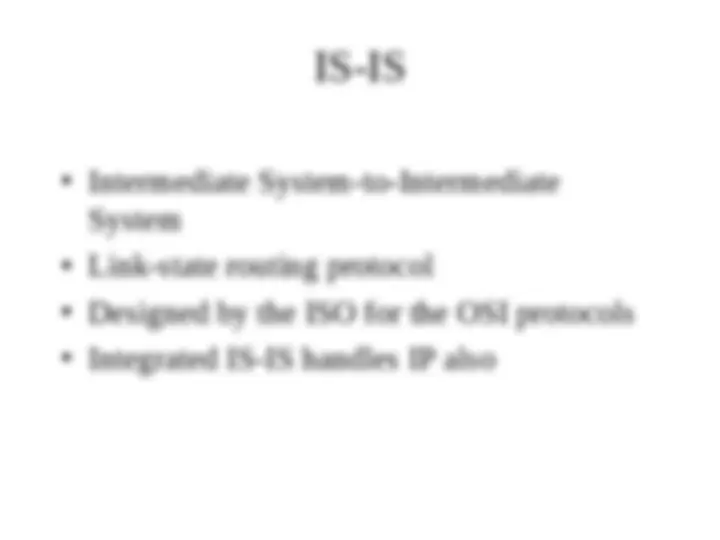
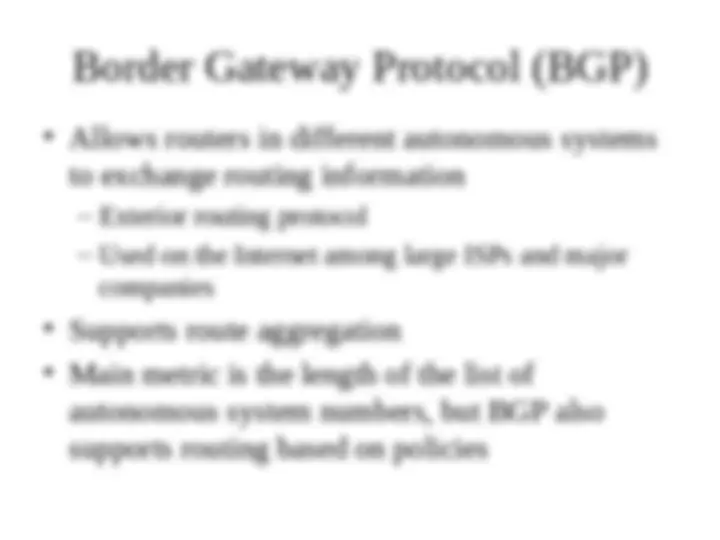
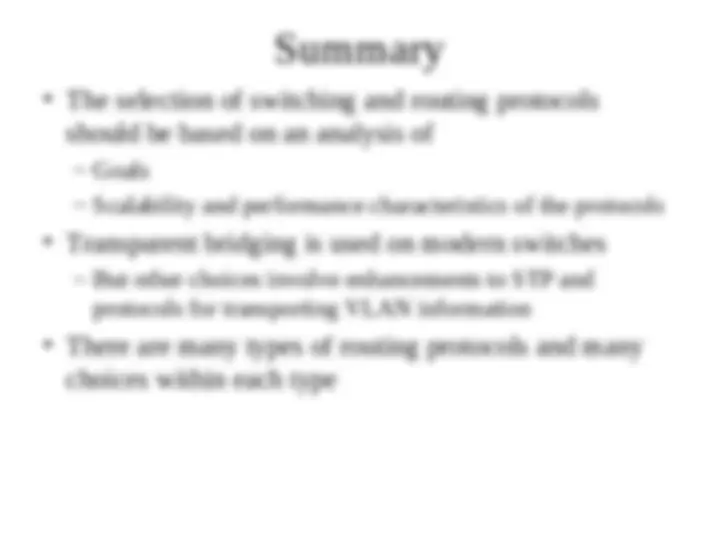



Study with the several resources on Docsity

Earn points by helping other students or get them with a premium plan


Prepare for your exams
Study with the several resources on Docsity

Earn points to download
Earn points by helping other students or get them with a premium plan
Community
Ask the community for help and clear up your study doubts
Discover the best universities in your country according to Docsity users
Free resources
Download our free guides on studying techniques, anxiety management strategies, and thesis advice from Docsity tutors
An in-depth analysis of various switching and routing protocols used in network design. It covers topics such as layer 2 transparent bridging, multilayer switching, spanning tree protocol enhancements, vlan technologies, static and dynamic routing, distance-vector and link-state protocols, and more. The document also discusses selection criteria for these protocols, including network traffic characteristics, bandwidth, memory and cpu usage, the number of peers supported, the capability to adapt to changes quickly, and support for authentication.
Typology: Schemes and Mind Maps
1 / 33

This page cannot be seen from the preview
Don't miss anything!


























Selecting Switching and Routing Protocols Copyright 2010 Cisco Press & Priscilla Oppenheimer
MAC Address Port 1 2 3 08-00-07-06-41-B 00-00-0C-60-7C- 00-80-24-07-8C-
RouterA(config)# ip route 0.0.0.0 0.0.0.0 172.16.20. If it’s not local, send it to 172.16.20.2 (Router B) e0 e0 e s0 s s0 s Router A Router B Router C Host A Host B Host C 172.16.10.2 172.16.30.2 172.16.50. 172.16.20.1 172.16.40. 172.16.10.1 172.16.30.1 172.16.50. 172.16.20.2 172.16.40.